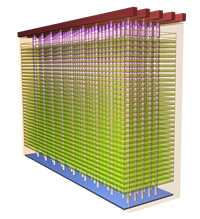The urgency for microLED technology to succeed is growing as OLED technology advances. According to experts, the path to success for microLED has been marked by challenges in achieving high-yield, low-cost, high-volume production. The initial optimism around microLED in 2017 has given way to a more extended timeline for commercialization. The industry has seen significant investments, with over $11.5 billion spent by 2023. However, cost models struggle to demonstrate that microLEDs can match OLED prices, posing a challenge in competitive markets like smartphones.
To establish itself as a viable alternative to OLED, microLED must deliver clear performance and functionality advantages, including higher brightness, color depth, stability, and modular displays. Innovative architectural changes, like Si-CMOS microdrivers, could enable advanced features and significantly reduce power consumption. Industry outsiders may drive these changes, but pricing challenges persist, especially for smaller players without access to Si-CMOS foundries.
Ecosystem competition in regions like China, Taiwan, and South Korea is influencing microLED development. Taiwan has formed a domestic microLED alliance, covering all aspects of development and manufacturing. China’s display and LED industries are nurturing domestic tool makers for mass transfer, testing, and repair. Korea, on the other hand, lacks established ecosystems but LG and Samsung are driving microLED tool and process development through their influence over domestic equipment players.
The success of microLED technology hinges on overcoming production challenges, adapting to industry changes, and navigating ecosystem competition in key regions. With significant investments and technological advancements, the microLED industry is poised for growth and innovation in the coming years.
Читать полную новость на сайте

/cloudfront-us-east-2.images.arcpublishing.com/reuters/LMMAVPMZBNOXHGY377GQTFT32U.jpg)





